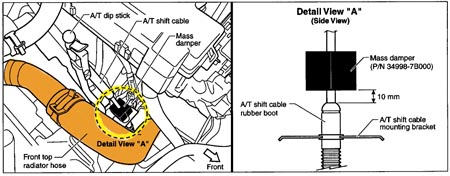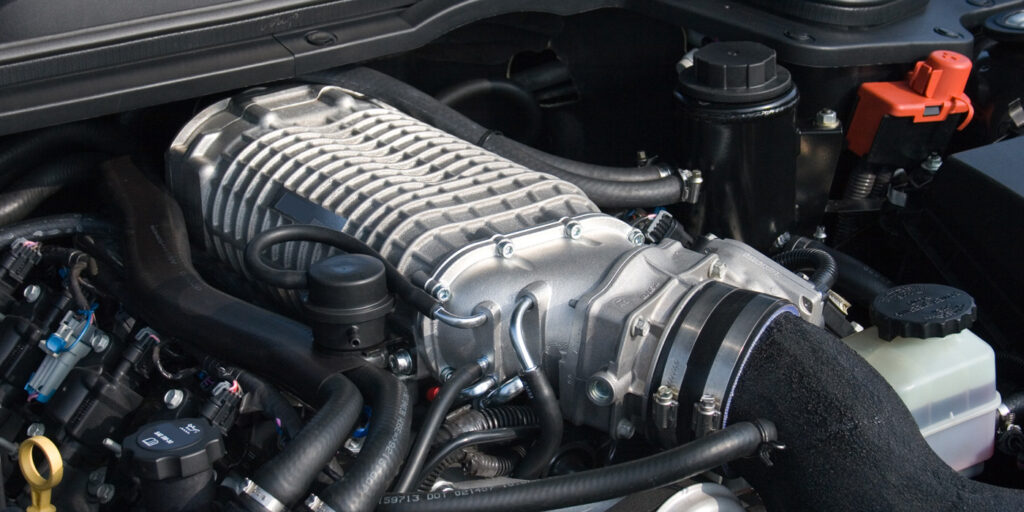If an applied vehicle listed below exhibits bearing noise (rumbling noise) coming from the bottom of the vehicle when the transfer case is in 4WD high and throttle application is light with speed between 15 and 35 mph, the original transfer case companion flange dust cover may be amplifying the sound of the bearing.
Applied Vehicles:
• 1999-2002 Frontier (D22); and
• 2000-’02 Xterra (WD22).
 A replacement companion flange designed to dampen the noise emitted from the bearing, should it occur, has been developed (see Figure 1). Use the service procedure provided in this bulletin to verify and repair this incident.
A replacement companion flange designed to dampen the noise emitted from the bearing, should it occur, has been developed (see Figure 1). Use the service procedure provided in this bulletin to verify and repair this incident.
Service Procedure:
1. Put the vehicle up on a hoist and while in 4WD high use a stethoscope to verify that bearing noise is occurring.
a. If the noise is occurring in locations other than the transfer case assembly companion flange, this bulletin does not apply. Use the appropriate Frontier/Xterra Electronic Service Manual (ESM) to investigate other causes for the noise.
b. If the noise is occurring from the transfer case assembly companion flange, proceed to Step 2 below.
2. Remove the original transfer case assembly companion flange. Reference the ESM, Section TF (Transfer)/On-Vehicle Service/ Replacing Oil Seal/Front Case Oil Seal.
3. Install the replacement companion flange and self-locking nut and reassemble the parts removed in Step 2 in reverse order. Torque the self-locking nut to 226-324 Nm (166-239 ft.-lb.)
4. Test-drive the vehicle to verify the noise is reduced.
Courtesy of IDENTIFIX.
For additional information, visit www.identifix.com.











